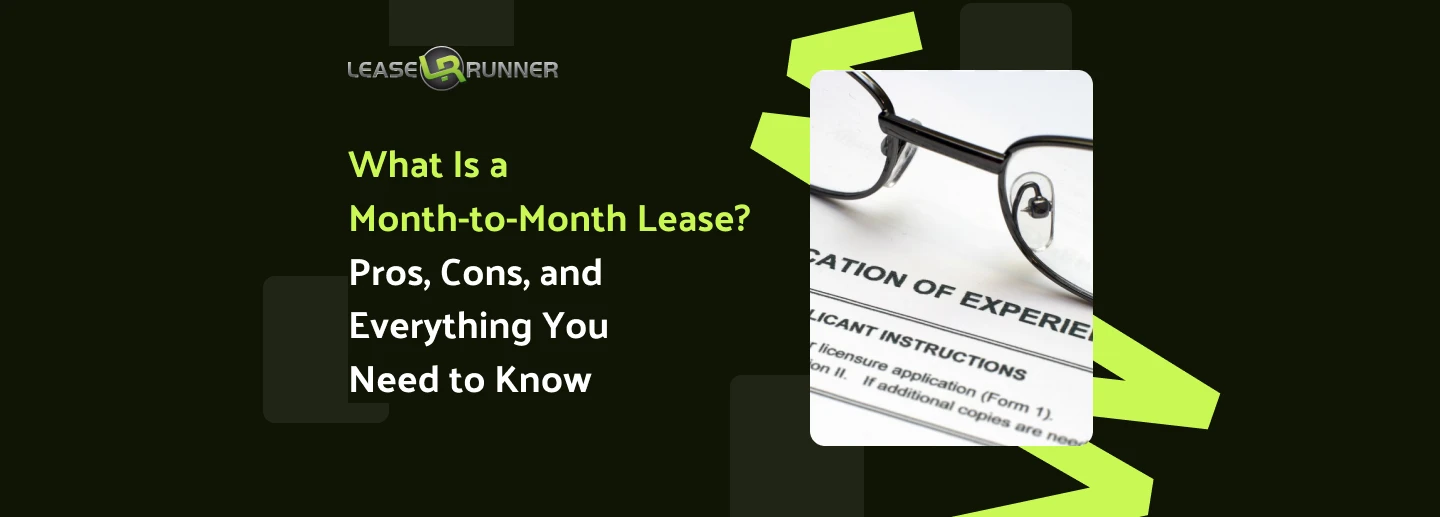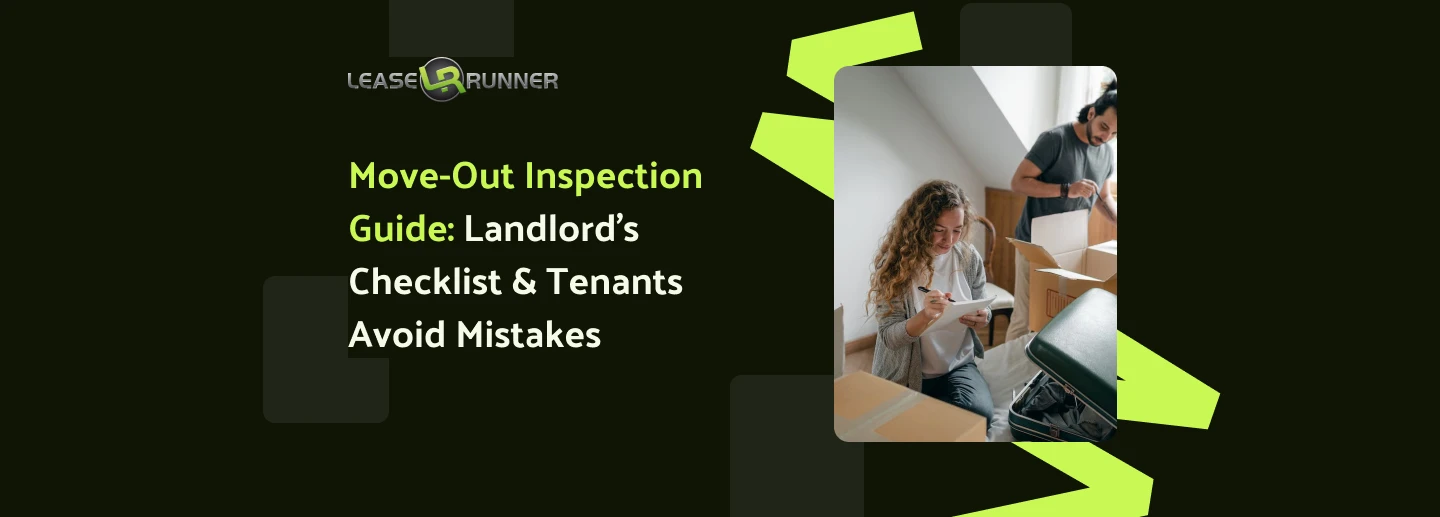Tenants and landlords who want flexibility in renting agreements must first understand what is a month-to-month lease. A month-to-month lease enables renters to rent without a lengthy commitment, unlike fixed-term leases. Proper notice allows landlords to alter conditions or terminate the lease.
If short-term accommodation is needed, this lease allows tenants to have freedom in the rented area. It also allows landlords to react fast to growth in the market.
In this article, we will also go over the pros and cons of a month-to-month lease, define what month-to-month tenancy means, and address frequently asked questions like what a monthly rental contract covers and whether landlords may increase rent with short or no notice. Join us now!

What Is a Month-to-Month Lease?
A month-to-month lease is a rental agreement that operates without a fixed end date. Instead of committing to a six- or twelve-month contract, the arrangement continues with automatic renewal every month. Either the tenant or the landlord can end the lease with a flexible rental agreement, usually requiring only a short notice termination as outlined by state law.
One of the main features of this type of lease is that it allows for rent and term adjustments, giving landlords the ability to adjust lease terms based on current market trends. At the same time, tenants benefit from the freedom to move out without long-term obligations.
Because of this balance, what is a month-to-month lease is especially appealing to renters who want to avoid lengthy commitments and to landlords who prefer agility in managing their property terms.
Common scenarios for a month-to-month lease
Month-to-month leases are popular because of their flexibility, and they often arise in three common situations. Below are the most frequent scenarios:
After a fixed-term lease expires
This is the most frequent scenario. When a fixed-term lease (e.g., a 12-month contract) expires, the tenancy can automatically convert into a month-to-month basis arrangement if no new lease is signed. This allows the tenant to continue living in the property while they decide on their next steps without being tied to another long-term commitment. According to California Civil Code § 1945, if a tenant remains in possession of the property after the lease expires and the landlord accepts rent, the tenancy is presumed to be month-to-month unless otherwise agreed upon.
For example, a tenant has a 12-month lease in San Francisco that ends on December 31st. If the tenant pays rent for January and the landlord accepts it, the lease automatically becomes month-to-month. This gives the tenant extra time to find a new place without feeling rushed. You can also learn the difference between a lease extension vs renewal.
For short-term housing
A month-to-month lease is an ideal solution for those who need temporary housing. This can apply to students on internships, people on a work assignment, or individuals in the process of moving who haven't yet secured a permanent home. It's also a great option for those looking for a mid-term rental.
For example, a person moves to New York for a three-month work project. They don't want to sign a one-year lease, which would result in a penalty for breaking the contract early. Instead, they look for an apartment with a month-to-month lease, providing a stable, short-term living situation without the long-term commitment.
Flexibility for landlords
For landlords, a month-to-month lease provides greater flexibility in managing their property and adjusting rent. This landlord flexibility is a key benefit.
- Rent Adjustments: Landlords can raise the rent to match current market rates without waiting for a fixed-term lease to end. State laws typically require written notice before a rent increase. For example, in Texas (Texas Property Code § 91.001), a landlord must give a tenant at least 30 days' written notice of a rent increase unless the lease agreement specifies otherwise.
- Property Recovery: If a landlord wants to use the property for personal reasons (e.g., for a family member) or sell it, they can easily terminate a month-to-month lease with proper notice. They might even offer a cash for keys agreement to incentivize the tenant to leave quickly.
How Does a Month-to-Month Lease Work?

A month-to-month lease works by renewing automatically each month. Here's how it generally functions:
- Signing the Lease: Tenants and landlords both sign a monthly rental contract that includes rent, conditions, and notice period requirements.
- Rent Payments: Tenants often pay their rent on the first day of the month.
- Automatic Renewal: The lease renews every month unless notice to terminate lease is given.
- Termination: Either side can end the lease by giving written notice or a proper termination letter, usually 30 days before moving out, or calling off the contract.
- Rent Adjustments: Landlords may increase rent or adjust conditions with sufficient written notice. In many states, this means at least 30 days, but some jurisdictions require longer, especially if the increase exceeds a certain percentage (e.g., California Civil Code § 827 requires 90 days’ notice for increases over 10%). This is a key part of what is a month-to-month lease.
- Security deposit: A deposit is usually collected at move-in to cover unpaid rent or damages beyond normal wear and tear. State laws cap the amount and set deadlines for returning it after move-out, usually 14–30 days. If you want to learn more about the difference between these fees, you can read our article on move-in fees vs security deposits.
If a renter wishes to leave on July 1, for instance, they have to tell the landlord before June 1. Likewise, depending on local policies, the landlord has to inform the tenant by June 1 or July 1 if they want to raise rent beginning August 1. For tenants wishing to leave, knowing how to write a non-renewal of lease letter is crucial.
Common Situations to Use a Month-to-Month Lease for Tenants
Below are frequent circumstances under which tenants or landlords prefer what is a month to month lease, with law references and practical illustrations.
- Trying out a new location: When moving to a new city or neighborhood, tenants may be unsure if the area is the right fit for them. A month-to-month lease allows them to "test out" the location without being locked into a long-term agreement.
- Needing temporary housing: This lease type is ideal for anyone who needs a place to live for a short, indefinite period. This includes interns, contract workers, or people in the process of building or renovating their permanent home.
- Transitioning after a fixed-term lease: When a fixed-term lease (e.g., one year) expires, if neither party renews it and the tenant remains and pays rent, in many jurisdictions the lease converts automatically to month-to-month. This avoids gap periods and provides continuity without a fresh long contract. This can be especially useful for multiple tenants on a lease who need time to coordinate their next steps.
Common Situations to Use a Month-to-Month Lease for Landlords
A month-to-month lease offers strategic benefits for landlords, especially in optimizing profitability and managing risk.
- Filling a vacancy in a difficult market: In a weak rental market, finding a tenant willing to sign a long-term lease can be challenging. A month-to-month rent agreement helps landlords generate income from a vacant property rather than letting it sit empty.
- Testing a tenant: For landlords who are unsure about a tenant (e.g. first-time renters, or someone with less established credit), a month-to-month lease gives the landlord an opportunity to see reliability (rent on time, property care) without committing to a long term. If issues arise, they can terminate with notice.
- Gaining flexibility: Landlords may want to maintain the ability to raise rent, change lease terms, or reclaim the property for sale, renovation, or other re-use, with quicker turnaround. Month-to-month leases give that flexibility, compared to fixed-term leases.
For example, Janet owns a rental in Seattle. She prefers month-to-month leases so she can raise rent with 30-60 days’ notice when market rents increase, or if she needs to take the unit off the market to renovate, give proper notice, and reclaim the unit.
Pros and Cons of a Month-to-Month Lease

A month-to-month lease can be a smart option in certain situations, but it also comes with trade-offs vs fixed-term lease. Both tenants and landlords should weigh the benefits against the potential downsides before deciding.
For Tenants
Pros
- Absolute Flexibility: A month-to-month lease gives tenants the freedom to move out on short notice, typically 30 days, without a financial penalty. This is ideal for individuals with uncertain plans or those who may need to relocate quickly for a job or personal reasons. This is a clear example of tenant flexibility. It also provides a way to differentiate between subletting vs subleasing when a tenant needs to move out temporarily.
- No Long-Term Commitment: Life circumstances can change unexpectedly. This type of lease prevents tenants from being locked into a long-term contract if they need to move for a new job, decide to buy a home, or simply dislike the location.
- Ideal for Short-Term Housing: It's the perfect solution for anyone in a transitional phase—whether you're between homes, on a temporary work assignment, or want to test out a new neighborhood before committing to a longer lease.
Cons
- Less Stability: The same flexibility that benefits tenants also applies to landlords. A landlord can terminate the lease with proper notice, usually 30 days, forcing the tenant to find a new place to live unexpectedly. This lack of security can be a significant source of stress.
- More Frequent Rent Increases: Landlords can adjust the rent more often than with a fixed-term lease to keep up with market fluctuations. This means your monthly housing costs can be unpredictable and are more likely to increase over time.
- Fewer Discounts: Month-to-month leases often come with a higher rent compared to long-term leases. Landlords typically charge a premium to offset the increased administrative work and risk of a shorter, less stable tenancy.
For Landlords
Pros
- Control Over Terms: A month-to-month lease gives landlords the power to quickly adjust rent or other lease terms to match the current market. This allows them to maximize their income potential and stay competitive.
- Easier Tenant Removal: If a tenant violates the lease agreement or the property is needed for other reasons—such as a sale or major renovation—a landlord can terminate the lease with a simple notice, which is much easier than breaking a fixed-term contract.
- Wider Tenant Appeal: The flexibility of a month-to-month lease can attract a broader pool of prospective tenants, particularly those who need short-term housing, which can help fill a vacancy more quickly.
Cons
- Higher Turnover and Vacancy Rates: More frequent tenant changes can lead to higher turnover costs and an increased risk of vacancy. According to a study by SmartMove, the average vacancy rate for month-to-month rentals is 4%, double the 2% rate for fixed-term leases. This means your property could sit empty for longer periods, costing you money.
- Unpredictable Income: Without a long-term lease, there's no guarantee of consistent rental income. Tenants can leave at any time with proper notice, creating financial uncertainty.
- More Administrative Work: The higher turnover rate means more work for the landlord. This includes more frequent tasks like screening new tenants, preparing lease agreements, and cleaning and repairing the unit between tenants.
Difference Between a Month-To-Month Lease and a Fixed-Term Lease
The two most common types of rental agreements are a month-to-month lease and a fixed-term lease. While both give a tenant the right to occupy a property, they differ significantly in terms of duration, flexibility, and stability.
Here is a detailed breakdown of the key differences, highlighting the differences from fixed-term lease:
1. Duration and Renewal
- Month-to-Month Lease: This is a short-term agreement that automatically renews every 30 days. It continues indefinitely until either the landlord or the tenant provides proper written notice to terminate it.
- Fixed-Term Lease: This is a long-term agreement with a specific, predetermined end date (e.g., six months, one year, or two years). The lease is legally binding for the entire term, and it does not automatically renew unless a specific clause is included.
2. Flexibility and Commitment
- Month-to-Month Lease: Offers maximum flexibility. Either party can terminate the agreement with a short notice period, typically 30 days, as specified by state or local law. There is no long-term commitment.
- Fixed-Term Lease: Requires a firm, long-term commitment. The tenant is obligated to pay rent for the entire term of the lease, and the landlord is obligated to provide the property for that same period. Breaking the lease early can result in significant financial penalties.
3. Rent
- Month-to-Month Lease: The rent can be adjusted more frequently. A landlord can raise the rent by providing a written notice, usually 30 days in advance, as required by law. This makes rent more susceptible to market changes.
- Fixed-Term Lease: The rent is locked in for the entire duration of the lease. A landlord cannot legally increase the rent during the agreed-upon term, providing tenants with stable, predictable housing costs.
4. Stability and Security
- Month-to-Month Lease: Less stable for both parties. A tenant faces the risk of the landlord ending the tenancy with minimal notice, while a landlord faces the risk of a tenant moving out unexpectedly, leading to a potential vacancy.
- Fixed-Term Lease: Provides security and stability. A tenant is guaranteed housing for the entire term, and a landlord is guaranteed a steady stream of rental income.
5. Penalties for Early Termination
- Month-to-Month Lease: There are typically no penalties for ending the lease, as long as the terminating party provides the required written notice.
- Fixed-Term Lease: Breaking the lease before the end date almost always results in a penalty. This can include a lump-sum fee, the loss of a security deposit, or the obligation to pay rent until a new tenant is found.
Common Reasons to End a Month-to-Month Tenancy as a Landlord?
For a landlord, a month-to-month lease offers the flexibility to terminate a tenancy for several key reasons, often with simpler legal requirements than a fixed-term lease.
- Selling the Property: A landlord may need to terminate the lease to sell the property, especially if the new owner plans to live in it or if a vacant property is more appealing to potential buyers.
- Renovation or Repair: If the property requires extensive renovations or repairs that make it uninhabitable, the landlord can end the lease to begin the work.
- Moving into the Property: Some landlords end a month-to-month lease to occupy the unit themselves or move in with a close family member.
- Changing the Property's Use: A landlord might end a lease to convert the rental property into a commercial space, a short-term rental unit, or for a different purpose altogether.
- Late Rent or Payment Issues: While this is a reason to terminate any lease, the month-to-month format allows for faster action. Chronic late payments or a history of non-payment can lead to the landlord terminating the agreement. Learn more about the best way to collect rent.
- Repeated Lease Violations: If a tenant consistently violates the terms of the lease—such as having unauthorized pets, smoking in a non-smoking unit, or causing excessive noise—the landlord can use the month-to-month structure to end the tenancy without going through a full eviction process for a fixed-term lease.
- Undesirable Tenant Behavior: This can include a wide range of issues that disrupt the peace and safety of the community, even if they aren't explicit lease violations. The flexibility of a month-to-month lease gives landlords a straightforward way to address these problems.
In many states, including Kansas, a month-to-month tenancy can be terminated without the landlord needing to state a specific reason, as long as they follow the proper notice requirements.
- No Reason Needed: For a month-to-month lease, landlords in Kansas are not legally required to provide a reason for ending the tenancy. This is a crucial distinction from an eviction, which requires a specific, legally valid reason (e.g., non-payment of rent, lease violation). Terminating a month-to-month tenancy is simply ending the contract on a contractual basis, not a punitive measure.
- It's Not an Eviction: Ending a month-to-month tenancy is a lease termination, not an eviction. An eviction is a legal process to force a tenant out, while a termination simply means the landlord chooses not to renew the lease for the next month.
- Notice Requirements: According to Kansas Statutes § 58-2570, a landlord must provide written notice of termination at least 30 days before the next rent due date. For example, if rent is due on the first of the month and the landlord wants the tenant to leave by July 31st, they must provide written notice on or before July 1st.
Final Thoughts
Knowing "What is a month-to-month lease?" deeply, for tenants as much as for landlords, is really important. Although a month-to-month lease gives freedom and tenant flexibility, it comes with trade-offs vs fixed-term lease like less stability and maybe rent hikes. It fits owners seeking control over rental arrangements and renters seeking temporary accommodation. LeaseRunner can accommodate both month-to-month leases and fixed-term leases.
All in all, you must understand your rights and responsibilities before signing. Clear, documented monthly rentals and open communication help to prevent misunderstandings.
FAQs
Q1. What notice is required to end a month-to-month lease?
Most states provide for a 30-day written notice before ending a month-to-month lease. The tenant or landlord has to let the other side know 30 days before leaving or ending the lease. Some other states, especially if the tenant has lived there for a significant length of time, call for a 60-day notice.
Q2. Can rent be increased on a month-to-month lease?
The answer is indeed yes. Rent may be raised by landlords on a month-to-month lease; however, they have to first provide written notice. Local guidelines can call for a 30 to 60-day notice period. Rent rises have to be fair and comply with local rent control policies. This is a clear example of month to month rental increase. When setting rent, landlords often follow the 3 times the rent rule.
Q3. What is the rental agreement minimum term?
The minimum term depends on the lease type and local laws. Usually lasting six or twelve months, fixed-term leases contain a minimum length during which renters must remain or pay penalties. Month-to-month leases run monthly until notice is provided; they have no set minimum duration.
Q4. Can I switch from a fixed-term lease to month-to-month?
Yes, it is feasible to swap if both the renter and the landlord agree. In many cases, if no new lease is signed, fixed leases automatically transform to month-to-month once the term finishes. Alternatively, both sides can decide to add a lease addendum or sign a month-to-month rent agreement instead of agreeing to terminate the fixed lease
Q5. Can a landlord in Kansas terminate a tenancy for any reason?
Yes, for a month-to-month tenancy, a landlord in Kansas can terminate the tenancy for any reason, as long as they follow the proper legal procedure. According to Kansas Statutes § 58-2570, a landlord must provide the tenant with at least 30 days' written notice before the next rent due date to end a month-to-month tenancy. As long as this notice requirement is met, the landlord does not need to justify their decision.







